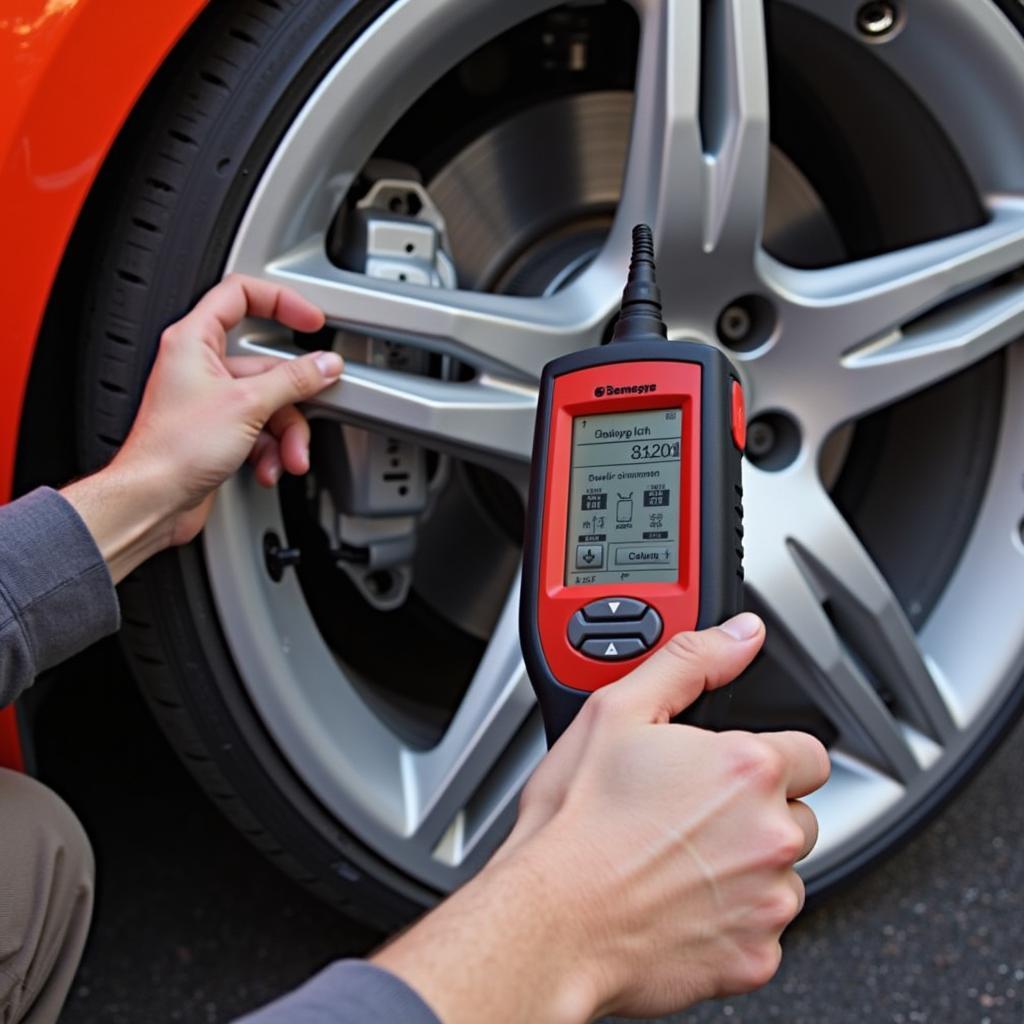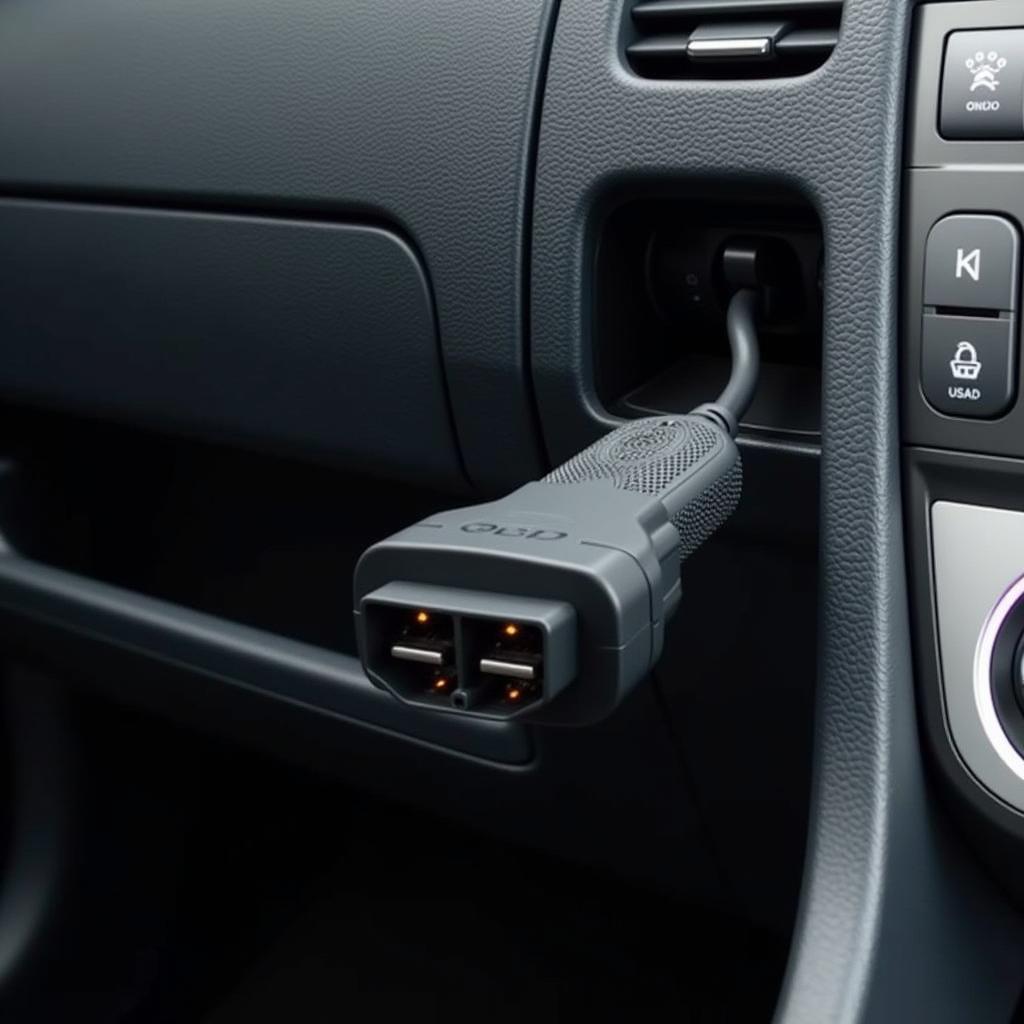Modern vehicles are increasingly reliant on complex networks of interconnected electronic control units (ECUs). These networks, often using CAN (Controller Area Network) or LIN (Local Interconnect Network) protocols, require specialized diagnostic tools. That’s where Networking Scanning Tools come in. These tools are no longer a luxury, but a necessity for accurate and efficient automotive diagnostics.
Understanding vehicle networks and using the right scanning tools is crucial for any automotive professional. These tools allow technicians to access, monitor, and analyze the data flowing through these networks, pinpointing the root cause of issues and enabling effective repairs. From diagnosing a faulty sensor to troubleshooting complex communication errors, networking scanning tools empower technicians with the information they need.
Similar to wireless network scanning tools netstumbler, automotive scanning tools also search for active network nodes. This technology is constantly evolving, with new tools and features emerging to keep pace with the ever-increasing complexity of vehicle electronics.
What are Networking Scanning Tools?
Networking scanning tools are specialized diagnostic devices designed to interact with the communication networks within a vehicle. They provide technicians with the ability to read and interpret data from various ECUs, enabling them to identify malfunctions and pinpoint the source of problems.
Why are Networking Scanning Tools Important?
Simply put, without networking scanning tools, accurately diagnosing modern vehicle problems can be nearly impossible. They allow for a deeper understanding of the intricate electronic systems within the vehicle.
Types of Networking Scanning Tools
Various types of networking scanning tools are available, each catering to different needs and budgets. Some are basic code readers that display fault codes, while others are advanced systems capable of bidirectional communication, allowing technicians to control and test individual ECUs.
Code Readers
These are basic scanning tools that can read and clear diagnostic trouble codes (DTCs).
OBD-II Scanners
These tools provide more advanced functionalities beyond just reading codes, such as displaying live data streams and performing some actuator tests.
Professional Scan Tools
These are high-end diagnostic systems used by experienced technicians and dealerships. They offer comprehensive functionalities, including bidirectional communication, advanced coding capabilities, and access to manufacturer-specific data. These sophisticated tools allow for in-depth analysis of network traffic, crucial for diagnosing intermittent faults and complex system interactions.
How to Choose the Right Networking Scanning Tool
Choosing the right networking scanning tool depends on your specific needs and budget. Consider the types of vehicles you work on, the complexity of the diagnostics you perform, and the features you require. Do you require basic code reading, or do you need advanced functionalities like bidirectional communication and oscilloscope capabilities?
Key Features to Look for
Consider features such as software updates, technical support, and compatibility with various vehicle makes and models. Like ubuntu default scanning tools, choosing tools with regular updates is important.
Software Updates
Regular software updates are crucial to ensure compatibility with the latest vehicle models and diagnostic protocols.
Technical Support
Reliable technical support is essential for troubleshooting issues and getting the most out of your scanning tool.
Vehicle Compatibility
Ensure the tool is compatible with the makes and models of vehicles you typically work on. This is especially important with the increasing prevalence of manufacturer-specific protocols and data.
Using Networking Scanning Tools Effectively
Using these tools effectively requires more than just plugging them in. Understanding the different communication protocols, data parameters, and diagnostic procedures is essential.
Understanding Network Protocols
Familiarize yourself with the common automotive network protocols such as CAN, LIN, and FlexRay.
Interpreting Data
Learn how to interpret the data displayed by the scanning tool, including sensor readings, fault codes, and network traffic. Similar to an ip port scan tool, automotive diagnostic tools can scan for open communication ports and check for connectivity issues.
Diagnostic Procedures
Follow proper diagnostic procedures to ensure accurate and efficient troubleshooting.
“A good networking scanning tool is like having x-ray vision into a vehicle’s electronic systems,” says John Smith, Senior Automotive Diagnostic Technician at ABC Auto Repair. “It allows you to see what’s really going on beneath the surface and pinpoint the root cause of problems quickly and efficiently.”
Future Trends in Networking Scanning Tools
The future of networking scanning tools lies in increased integration with other diagnostic equipment, cloud-based data sharing, and the use of artificial intelligence for automated diagnostics. Similar to wireless security scanning tools, future diagnostic tools will also likely incorporate enhanced security features to protect vehicle networks from cyber threats. “The next generation of scanning tools will be more powerful, more versatile, and more integrated than ever before,” adds Jane Doe, Lead Engineer at XYZ Automotive Diagnostics. “They will empower technicians to diagnose and repair increasingly complex vehicle systems with greater speed and accuracy.”
Conclusion
Networking scanning tools are indispensable for anyone involved in modern automotive diagnostics. Understanding these tools and their capabilities is crucial for accurate and efficient troubleshooting. From basic code readers to advanced professional scan tools, selecting the right tool is essential for success. For further assistance, connect with ScanToolUS at +1 (641) 206-8880 or visit our office at 1615 S Laramie Ave, Cicero, IL 60804, USA. As regulatory landscapes change, tools like regulatory horizon scanning tools become important for staying compliant. Investing in the right networking scanning tool is an investment in your future as an automotive professional.


